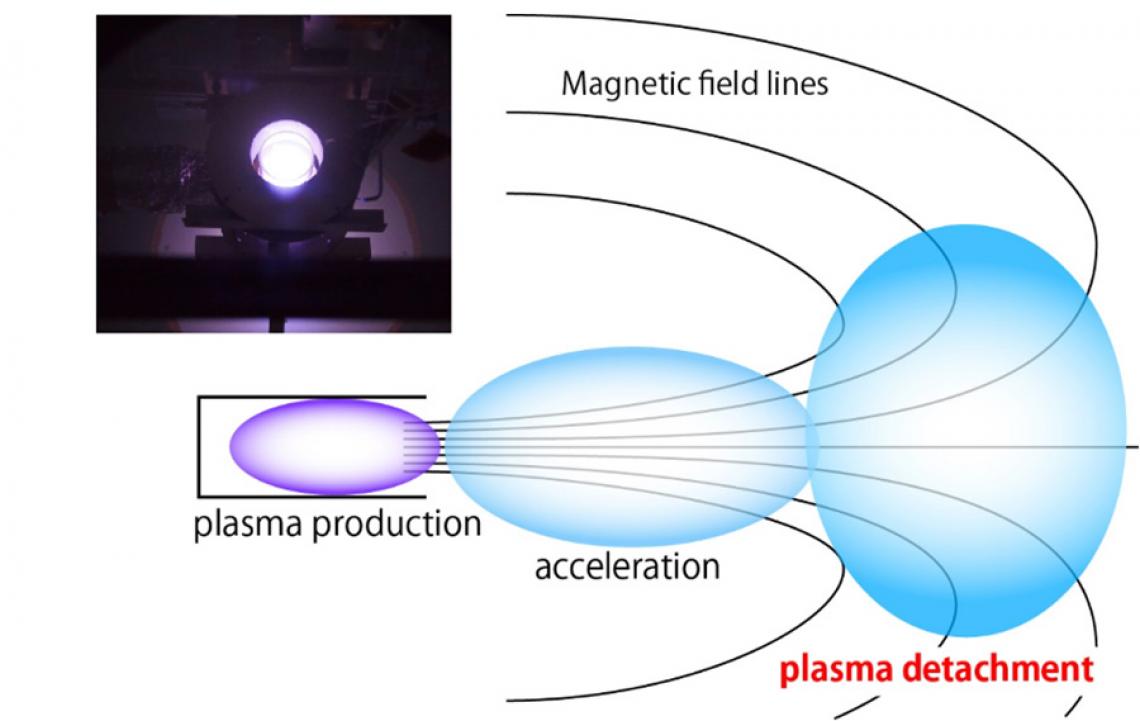An image of the cross-field electron transport and plasma detachment from the magnetic nozzle.
A research group has demonstrated that spontaneously excited plasma waves may be the solution to a long-associated problem with magnetic nozzle plasma thrusters, turning conventional thinking on its head.
Details of their research were published in the journal Scientific Reports on December 5, 2022.
In magnetic nozzle radio frequency thrusters, sometimes referred to as helicon thrusters, magnetic nozzles channel and accelerate plasma to allow spacecraft to generate thrust. The technology, which harnesses electric propulsion, shows great potential for ushering in a new era of space travel. Yet the so-called "plasma detachment" problem has hampered further development.
Since magnetic field lines always form closed loops, the ones inside magnetic nozzles inevitably turn back to the thruster structure. For this reason, the plasma flow has to be detached from the magnetic nozzle. Ions, having a large gyro radius, detach easily from the magnetic nozzle. But electrons, with their small mass and small gyro radius, are tied to the field lines, generating an electric field that pulls the ions back and renders a net thrust of zero.
When plasma expands, it can gain or lose energy and momentum due to waves, turbulence or electromagnetic forces. Plasma transport and loss due to the wave and turbulence have been a major issue for confining plasma in thermonuclear fusion reactors.
Yet after analyzing the detailed data from the plasma density and electric field fluctuation signals, the research group from Tohoku University and The Australian National University discovered that the spontaneously excited waves brought about an inward cross-field transport of magnetized electrons towards the main axis of the magnetic nozzle, neutralizing the ions detaching. The electron inward transport was in fact beneficial to detachment, helping to reduce the divergence of the expanding plasma beam.
"Our discovery is a rare case where plasma instabilities actually have a favorable effect on engineering," said Professor Kazunori Takahashi, from Tohoku University's Department of Electrical Engineering, and lead author of the study. "Our findings open up a new perspective on the role of instabilities in plasmas, and will help the development of magnetic nozzle radio frequency plasma thrusters."
A brief description of the magnetic nozzle plasma thruster. The upper-left inset is a photo of the thruster operating in a laboratory.




